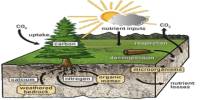When plants like pea and sunflower seeds are biofortified with zinc, the seedlings they quickly develop and are collected as microgreens may assist to reduce global malnutrition and increase the likelihood that people would survive a disaster.
This is the finding of a Penn State research team that tested a number of biofortification techniques to find the best means of introducing a mineral necessary for human health into young plants without reducing the quantity of other crucial nutrients they generate.
Microgreens biofortified with zinc offer people a lifeline in the face of starvation risk, according to team leader Francesco Di Gioia, assistant professor of vegetable crop science.
“This study has demonstrated that zinc biofortification through seed nutri-priming achieves needed levels of zinc in the young pea and sunflower plants we focused our experiments on,” he said. “These results have implications for both global ‘hidden hunger’ and emergency or catastrophe preparedness.”
The project, Food Resilience in the Face of Catastrophic Global Events, continues to advance with this work as a new development. In Di Gioia’s research, a global team of scientists discovered that microgreens may be cultivated indoors in constrained places using a variety of soilless production systems, with or without artificial lighting. The zinc biofortification component is an important new innovation.
Biofortification is the process of growing crops to increase nutritional value from the seed on, Di Gioia explained. Contrasted with food fortification, which involves nutritional addition to foods during post-harvest processing, it is not the same.
This study has demonstrated that zinc biofortification through seed nutri-priming achieves needed levels of zinc in the young pea and sunflower plants we focused our experiments on. These results have implications for both global ‘hidden hunger’ and emergency or catastrophe preparedness.
Di Gioia
He noted that soaking seeds in a zinc solution is a simple and efficient method for growing nutrient-dense microgreens in underdeveloped or post-catastrophic areas of the world.
“Starting decades ago as fashionable, high-value gourmet greens, microgreens today have gained popularity among consumers for their nutritional profile and high content of antioxidant compounds,” he said. “Our work shows microgreens can help people to survive a global catastrophe such as all-out nuclear war, a large asteroid strike or supervolcano eruption in the short term, but additional nutritional resources may be needed in the longer term.”
Such a catastrophic catastrophe would threaten malnutrition for those who survived the first event by lowering sunshine and temperature, altering rainfall patterns, and poisoning water supplies. Early synthesis of biofortified microgreens could increase the likelihood of human survival in these circumstances.
Pradip Poudel, a doctorate candidate in the College of Agricultural Sciences, is excited about the possibility of being able to quickly alleviate hidden hunger as well. He argued that a sustainable approach to addressing malnutrition is to produce nutrient-dense crops utilizing agronomic biofortification techniques.
The World Health Organization (WHO) defines”hidden hunger” as a lack of vitamins and minerals that occurs when the quality of food people eat does not meet the nutrient requirements they need for their growth and development, Poudel noted. Two billion people suffer from vitamin and mineral deficiencies, according to the WHO.
“We were thinking, how can we increase the content of zinc in microgreens, developing a very simple way that people could use at home in a ‘microgreens growing kit’ that could be delivered in an emergency situation,” he said. “And we know it will be important to include a fertilizer source for zinc so people will just have to soak the seeds before putting them in germination a very simple process that anyone can do to enrich their microgreens with zinc.”
The researchers found that zinc sulfate, which is occasionally taken as a dietary supplement to address a zinc shortage or to improve wellbeing, was the most efficient zinc source. Their findings were just published in Frontiers in Plant Science. Seeds soaked in a 200 parts per million solution of zinc sulfate resulted in higher zinc accumulation in both peas (126%) and sunflower microgreens (230%).
Researchers examined the effect of different zinc sources and soaking concentrations on microgreen-yield components such as mineral content; phytochemical constituents such as total chlorophyll, carotenoids, flavonoids, anthocyanin and total phenolic compounds; antioxidant activity; and antinutrient factors such as phytic acid.
Positively, the researchers noted that seed soaking in zinc sulfate and zinc oxide solutions at greater concentrations decreased phytic acid in both pea and sunflower microgreens. Because phytic acid is known to be an “anti-nutrient,” its lower level suggests the zinc might be more bioaccessible, or nutritionally available, to consumers.
While microgreens and sprouts are similar, they are not the same thing, Poudel noted. Both are baby plants; both can be grown indoors; and both can be grown from the same types of seeds. But that is where the similarities end.
A sprout is the first stage in a plant’s life cycle after the seed germinates. When the baby plant grows beyond its first shoot and root, it transitions to the microgreen stage. Microgreens are essentially the mature plant in miniature, with leaves, stems and roots. They are typically harvested after the stem has grown 3 to 5 inches tall and its first set of leaves appear.
“The reason microgreens are so rich in nutrients, vitamins, minerals and antioxidants,” he added, “is that they all soon would be spread throughout the maturing plants’ leaves, flowers and fruit.”
















